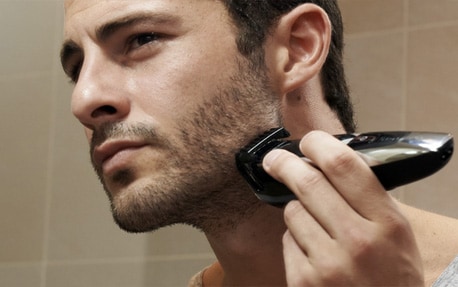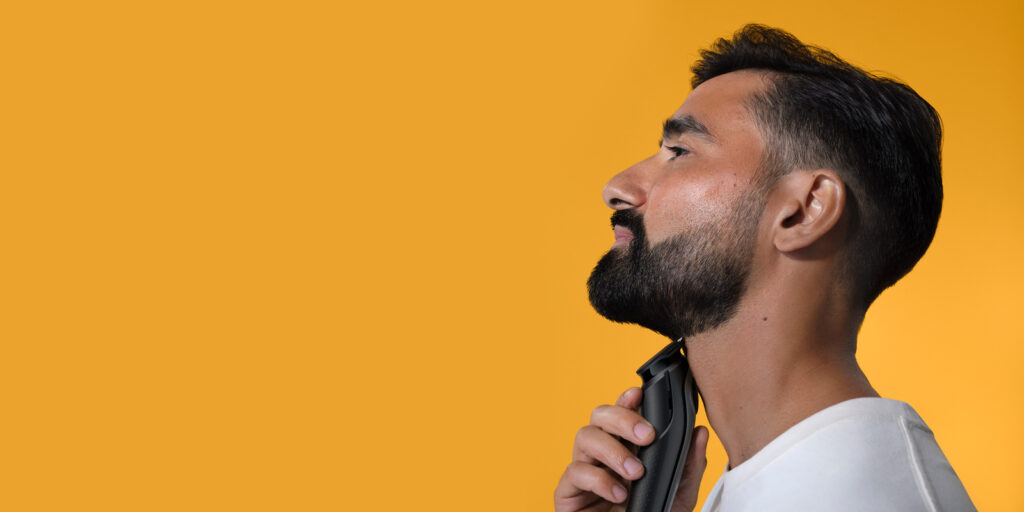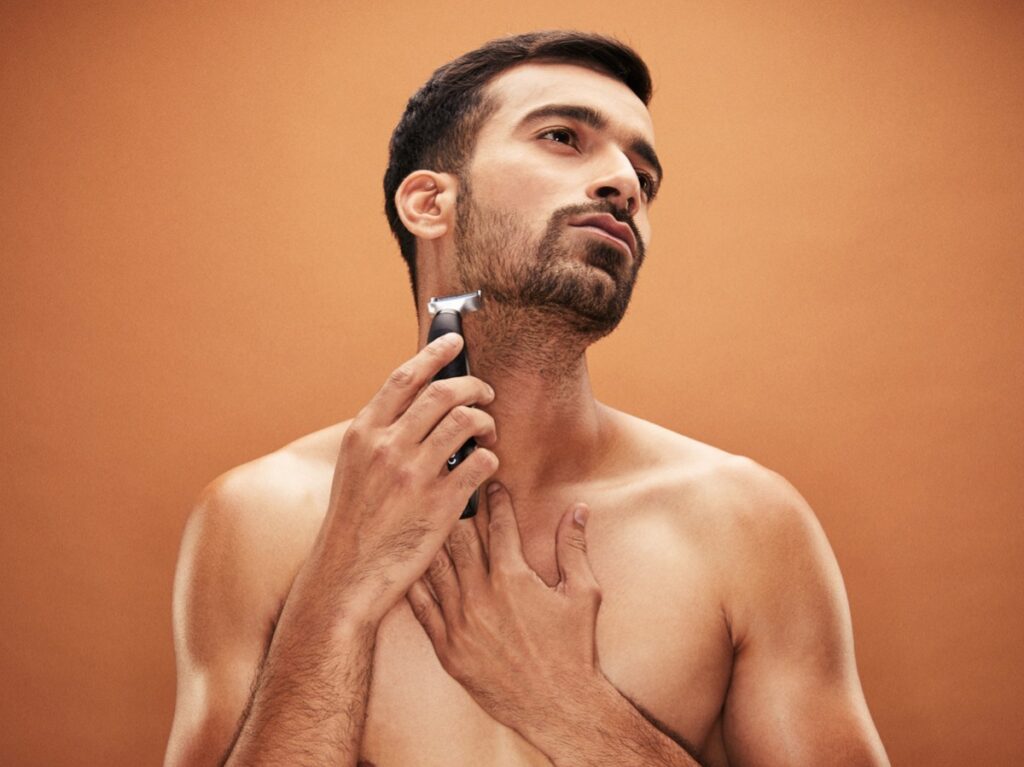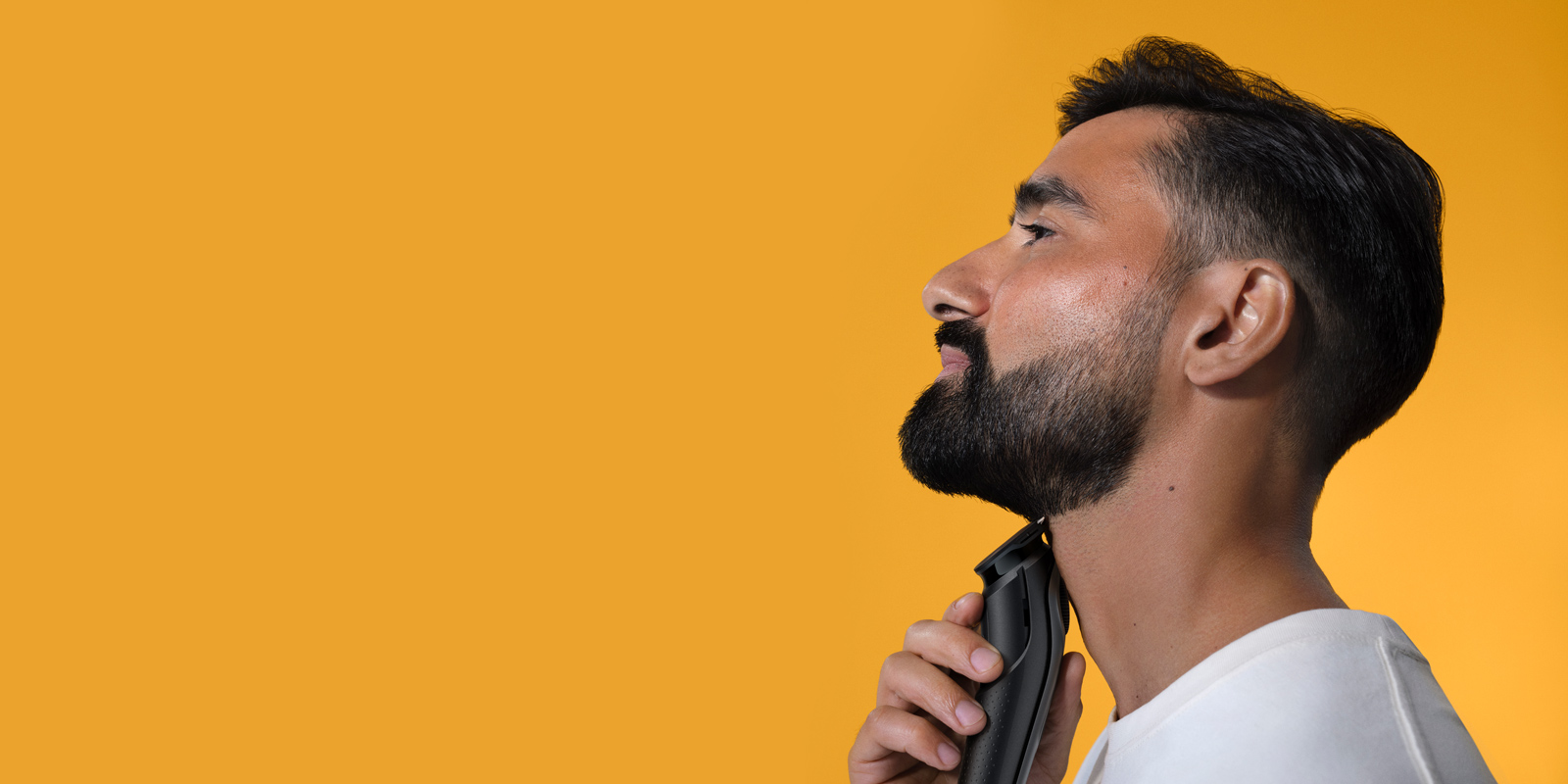Are you tired of dealing with unruly facial hair and want to find the best way to trim it? Look no further. This article will guide you through the most effective techniques and tools to easily achieve a well-groomed and presentable look. Say goodbye to messy beard lines or uneven mustaches, and say hello to a meticulously trimmed and stylish facial hair that suits your personality. Whether you’re a grooming novice or a seasoned pro, we’ve got you covered with expert advice and tips that will leave you looking sharp and confident. Get ready to transform your facial hair game with the best techniques out there.

Choosing the Right Tools
Determining your preferred method
When it comes to trimming facial hair, one of the first things you need to consider is your preferred method. Do you prefer using manual tools like scissors or do you lean more towards electric trimmers? Think about your comfort level and the level of precision you desire. Manual tools provide more control and are great for shaping and detailing, while electric trimmers are faster and better suited for maintaining and trimming larger areas.
Understanding the different types of trimmers
If you decide to go with electric trimmers, it’s important to understand the different types available. There are two main types: corded and cordless. Corded trimmers are typically more powerful and provide a consistent level of performance throughout your grooming session. On the other hand, cordless trimmers offer more flexibility and mobility, allowing you to move freely without being tethered to an outlet. Consider which type suits your lifestyle and grooming routine best.
Considering additional features
While the basic function of a trimmer is to cut hair, there are many additional features to consider that can enhance your trimming experience. Some trimmers come with built-in length adjustments, allowing you to easily switch between different hair lengths. Others have various attachments and accessories such as precision blades for detailing, adjustable guards for different areas of the face, and even built-in vacuum systems to minimize the mess. Take some time to research and determine which features are important to you.
Getting the right accessories
No matter what method or trimmer you choose, having the right accessories can make a big difference in your trimming routine. Make sure you have a sturdy comb or brush to help guide the hair and ensure a more even trim. Additionally, investing in a good pair of grooming scissors can be useful for shaping and detailing specific areas. Lastly, don’t forget about maintenance – having a cleaning brush or small brush can help keep your trimmer clean and ensure longevity.
Prepping Your Face
Washing and drying your face
Before you start trimming your facial hair, it’s important to ensure that your face is clean and dry. Washing your face with a gentle cleanser will remove any dirt or oils that may interfere with the trimming process. Pat your face dry with a clean towel to avoid any excess moisture, as damp hair can be more difficult to trim.
Applying pre-shave oil or gel
To further prepare your face for trimming, consider applying a pre-shave oil or gel. These products help to soften the facial hair, making it easier to trim and reducing the chances of irritation. Simply apply a small amount to your fingertips and massage it into your beard or mustache, ensuring it is evenly distributed.
Using warm water or a hot towel
Another helpful step in prepping your face is to use warm water or a hot towel. This helps to open up the hair follicles and relax the skin, making it easier to trim the hair. You can either splash your face with warm water or place a hot towel over your beard and mustache for a few minutes. This simple step can greatly improve your trimming experience.
Trimming after a shower
If you have the luxury of time, consider trimming your facial hair after a shower. The warm water and steam from the shower will have already opened up the hair follicles, making it even easier to trim. Additionally, your facial hair will be softer and more manageable, resulting in a smoother and more precise trim.
Setting the Desired Length
Deciding on the ideal facial hair length
Before you start trimming, it’s important to decide on the ideal length you want for your facial hair. Are you aiming for a shorter, neater look or do you prefer a longer, more rugged style? Having a clear idea of the length you want will help guide your trimming process and ensure you achieve the desired result.
Adjusting the trimmer’s guard or setting
Once you’ve decided on the ideal length, it’s time to adjust the trimmer’s guard or setting accordingly. Most electric trimmers come with different guard sizes or adjustable settings that allow you to easily customize the length of your trim. Start with a longer guard or setting and gradually work your way down to your desired length, allowing for more control and avoiding cutting off too much hair in one go.
Using a built-in length adjustment feature
Some trimmers come with a built-in length adjustment feature, allowing you to easily switch between different hair lengths without having to change guards or settings. This can be particularly convenient if you like to switch up your facial hair style frequently or if you prefer a more versatile trimmer.
Trimming shorter for a neater look
If you’re aiming for a neater look or want to trim specific areas such as your cheeks or neck, consider using a shorter guard or setting. This will help you achieve a more precise and controlled trim, allowing you to shape and define your facial hair to perfection. Remember to take your time and make small, gradual adjustments to avoid any mishaps.
Working on the Neckline
Finding the natural neckline
The neckline is an important aspect of your facial hair, as it helps define the overall shape of your beard or mustache. To find your natural neckline, tilt your head forward and locate the point where your neck meets your jawline. Use your finger or a small comb as a guide to mark this point, ensuring a clean and well-defined neckline.
Using a template or guide
If you’re unsure about finding the right neckline for your face shape, you can use a template or guide to help you. These tools are readily available online or at grooming stores and provide a visual aid to help you create a symmetrical and well-balanced neckline. Simply align the template or guide with your jawline and use it as a reference when trimming.
Creating a straight or curved neckline
When it comes to shaping your neckline, you have the option of creating a straight or curved line, depending on your preference and the style you’re going for. A straight neckline creates a more defined and masculine look, while a curved neckline appears softer and more natural. Experiment with different styles to find the one that suits you best.
Blending the neckline with the beard
To achieve a seamless and natural look, it’s important to blend the neckline with the rest of your facial hair. This can be done by using the trimmer without a guard, gently fading the hair from the neckline into the beard or mustache. Take your time and make small, controlled movements to ensure an even blend and prevent any visible demarcation lines.

Trimming the Cheeks and Sideburns
Defining the cheek line
The cheek line is another crucial element in shaping your facial hair and defining your overall look. To determine the appropriate cheek line for your face, imagine a straight line that extends from the outer edge of your sideburns to the corners of your mouth. This will serve as a guideline to help you achieve a symmetrical and well-balanced trim.
Using a comb as a guide
To ensure an even and precise trim along your cheek line, use a comb as a guide. Simply comb your facial hair towards the desired direction and trim any excess hair that falls above the comb. This technique helps create a more consistent length and reduces the chances of accidentally cutting off too much hair.
Creating symmetry on both sides
When trimming your cheeks and sideburns, it’s important to maintain symmetry on both sides of your face. Start by trimming one side and then compare it to the other side in a mirror. Make any necessary adjustments to ensure both sides are even and symmetrical. This attention to detail will result in a more polished and professional-looking trim.
Shaping and tapering sideburns
If you have sideburns, you can enhance the overall appearance of your facial hair by shaping and tapering them. Use the trimmer without a guard or a shorter guard to carefully trim the sideburns, following their natural contour. Gradually taper the hair towards the end, creating a more streamlined and polished look.
Managing the Mustache
Deciding on mustache style
The mustache is a prominent feature of your facial hair and can greatly influence your overall look. Deciding on the mustache style you want is crucial before you start trimming. Whether you prefer a classic handlebar, a bushy walrus, or a sleek pencil-thin mustache, knowing your desired style will guide your trimming technique.
Combing the mustache hair
To ensure a uniform and tidy mustache, comb the hair in the desired direction before trimming. This helps to separate the hairs and makes them easier to cut. Pay attention to any unruly or tangled hairs and gently comb them into place, ensuring a smooth and even surface.
Using precision trimmers
When it comes to trimming the mustache, precision is key. Use a precision trimmer or a trimmer with a narrow blade to carefully trim the hair along the upper lip area. Take your time and make small, controlled movements to maintain the desired shape and length of your mustache.
Trimming the upper lip area
Trimming the upper lip area can be a delicate task, as it requires precision and attention to detail. Start by trimming the hairs that overhang the upper lip, making small adjustments as needed. Remember to comb the mustache hair downwards before trimming to ensure an even and clean look.

Shaping the Jawline
Determining the desired jawline shape
The jawline plays a crucial role in framing your face and accentuating the shape of your beard or mustache. Take some time to determine the desired shape of your jawline. Whether you prefer a well-defined and sharp angle or a more rounded and natural curve, having a clear idea of the shape you want will guide your trimming process.
Using the trimmer to shape the jawline
To shape the jawline, use the trimmer without a guard or a shorter guard setting. Start by trimming the area around the jawline, making small and controlled movements. Gradually work your way along the jawline, ensuring a consistent and even trim. Pay attention to the direction of hair growth and adjust your trimmer accordingly for a smooth result.
Going for a defined or natural look
When shaping the jawline, you have the option of going for a defined or natural look. A defined jawline creates a more chiseled and structured appearance, while a natural jawline allows for a softer and more relaxed vibe. Consider your personal style and facial features to determine which option suits you best.
Blending the jawline with the beard
To achieve a cohesive and harmonious look, it’s important to blend the jawline with the rest of your beard or mustache. This can be done by gradually fading the hair from the jawline into the beard, using the trimmer without a guard or a shorter guard setting. Take your time and make small adjustments to create a seamless transition.
Trimming the Upper Lip
Deciding on the lip hair length
The length of the hair above the upper lip can greatly impact the overall look of your mustache and facial hair. Determine the desired length for your upper lip hair, whether you prefer a shorter and more precise look or a longer and fuller mustache style. This will guide your trimming technique and help you achieve the desired result.
Using precision trimmers or scissors
When it comes to trimming the hair above the upper lip, precision is essential. Use a precision trimmer with a narrow blade or a pair of grooming scissors to carefully cut the hair to the desired length. Take your time and make small, controlled movements to achieve a neat and symmetrical trim.
Trimming the upper lip area carefully
The upper lip area can be particularly sensitive and prone to irritation, so it’s important to approach it with care. Avoid putting excessive pressure on the trimmer or scissors and make sure the blades are sharp to minimize pulling or tugging of the hair. Take your time and trim the upper lip area carefully, ensuring a comfortable and precise trim.
Avoiding cuts and shaping the edges
When trimming the upper lip area, it’s crucial to avoid any cuts or nicks. Pay close attention to the shape and edges of your mustache, making small adjustments as needed to achieve the desired style. Be patient and take breaks if necessary to ensure a steady hand and minimize the risk of accidental slips.

Maintaining the Beard Outline
Defining the beard’s shape and boundaries
The beard outline is what gives your facial hair its structure and defines its overall shape. Take some time to determine the desired shape and boundaries of your beard. Do you want a narrow or wide outline? Should it be rounded or squared? These decisions will guide your trimming process and help you achieve a well-defined and polished result.
Trimming along the cheek and jawline
To maintain a clean and well-groomed beard outline, pay attention to the hair along your cheek and jawline. Using a trimmer with a shorter guard or the trimmer without a guard, carefully trim any stray or overgrown hairs that fall outside your defined outline. Make small, controlled movements and gradually work your way along both sides of your face to maintain symmetry.
Blending the beard into the mustache
To achieve a seamless and natural look, it’s important to blend the beard into the mustache. This can be done by gradually fading the hair where the beard meets the mustache, using the trimmer without a guard or a shorter guard setting. Take your time and make small adjustments to create a smooth and even transition.
Avoiding a patchy or uneven outline
When maintaining the beard outline, it’s important to avoid any patchy or uneven areas. Take your time and work in small sections, ensuring that each area is trimmed evenly and in line with your desired outline. If you encounter any areas that are thicker or sparser than others, make small adjustments to achieve a more balanced and uniform look.
Finishing Touches
Inspecting and adjusting the trim
After you’ve completed your trimming session, take a moment to inspect your facial hair and make any final adjustments if necessary. Use a mirror to carefully examine all angles and areas, ensuring that the trim is even and precise. This attention to detail will help you achieve a polished and professional-looking result.
Trimming stray or longer hairs
During the inspecting stage, you may come across stray or longer hairs that were missed during the initial trimming process. Use a precision trimmer or a pair of grooming scissors to carefully trim these hairs, keeping them in line with the rest of your facial hair. Taking the time to address these stray hairs will ensure a neat and tidy appearance.
Applying aftershave or moisturizer
Once you’re satisfied with your trim, consider applying aftershave or a moisturizer to soothe the skin and reduce any potential irritation. Aftershave can help close the pores and provide a refreshing sensation, while moisturizer will keep the skin hydrated and prevent dryness. Choose products that are suitable for your skin type and gently apply them to your face and neck.
Cleaning and maintaining the trimmer
Lastly, don’t forget to clean and maintain your trimmer for future use. After each trimming session, remove any hair clippings and debris from the trimmer. Use the provided cleaning brush or a small brush to remove any stuck hair and ensure that the blades are clear. Additionally, follow the manufacturer’s instructions for oiling and maintaining the trimmer to keep it in top condition.
In conclusion, trimming facial hair requires careful consideration and attention to detail. By choosing the right tools, prepping your face properly, setting the desired length, working on all the different areas, and applying finishing touches, you can achieve a well-groomed and stylish facial hair look. Remember to take your time, be patient, and experiment with different techniques to find what works best for you. Happy trimming!

